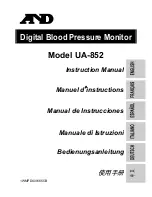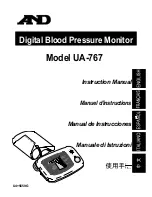
18
Release Notes
Known Issues and Limitations
• If two multi-viewers in a cascade are connected to the same router, then the router
name should be the same in both configurations. Conversely, two different routers in
the same cascade must not have the same name.
• Serial ports are not shared between cascade members. A serial device connected to
one multi-viewer in a cascade is not known to the other cascade members.
• Working against the same cascade system in concurrent XEdit sessions is not
supported.
• EDID auto-detection is not supported. When configuring a cascade room, make sure
the
Use detected monitor resolution
check box is not selected for any of its displays.
Refer to “Enabling EDID Auto-Detection from the Monitor Wall“, or “Enabling EDID
Auto-Detection in XEdit“, in the Kaleido-X User’s Manual, for details.
• In the case of a
KMV-3901/3911
cascade room with two heads, spanning monitors
across the two displays is not supported.
• Although nothing prevents you from configuring a
Kaleido-X
cascade system in XEdit,
such a configuration is not supported.
Hardware
•
[Ref. #26514]
Input cards:
It is possible to use legacy KXI-16HSV, KXI-16HS or KXI-16SV
input cards with the latest KXI-16H3-R rear panels. However, in such a case, the return
loss specification for the SDTI input is: > 15 dB up to 200 MHz and > 12.5 dB up to
270 MHz.
•
KMV-3901/3911 does not support USB hubs:
Only one USB device (USB key or mouse)
can be connected at a time. If an externally powered USB hub is connected to the KMV-
3901/3911, then a mouse connected to the hub will not work.
•
[Ref. #19765]
Kaleido-RCP2 does not support USB hubs:
If an externally powered USB
hub is connected to the RCP2, then a mouse connected to the hub will not work.
Similarly, multi-function keyboards or numeric keypads that have a built-in USB hub
also do not work when connected to the Kaleido-RCP2.
Workaround:
Use a standard keyboard or keypad, and connect it to the Kaleido-RCP2
directly.
•
[Ref. #14565]
Kaleido-X (4RU)/Kaleido-X (7RU):
Interconnect configurations are lost
when you change frame type.
•
[Ref. #12186]
Ethernet Switch:
When a KXO-DUAL card is connected to an HP ProCurve
408 Ethernet switch, the switch may not recognize the output card.
Workaround:
Forcing the output card's link mode to 100 Mbps full duplex may help.
•
[Ref. #19114]
Redundancy:
The KXO and KXI cards in a Kaleido-X multi-viewer have built-
in redundancy that works like a RAID 3 or 5 disk array—when a faulty card is removed,
the other cards automatically rebuild the software on its replacement. In order for this
to work properly, however, a faulty card must be replaced and the system must be
allowed time to rebuild. Swapping cards around indiscriminately, without any
Note:
Support for the Kaleido-X (4RU) was introduced with Kaleido-X
version 2.10. Only cards of this version or later should be used in a 4 RU
frame.
















































